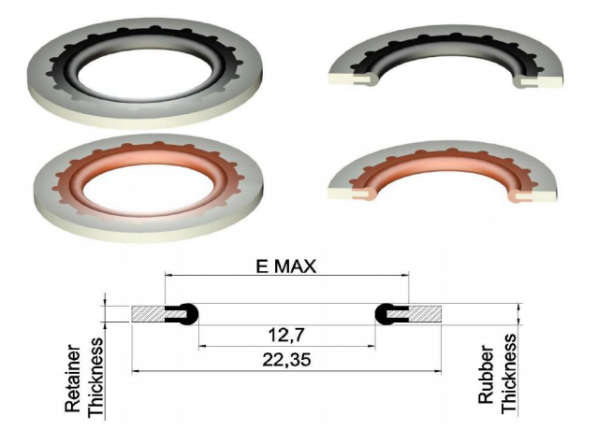Understanding the Importance of Seals in Manual Transmission Systems for Optimal Performance and Longevity
Understanding Manual Transmission Seals Importance and Maintenance
Manual transmissions, known for their robust performance and driver engagement, play a vital role in the functionality of many vehicles. One often-overlooked component of manual transmissions is the seals. This article delves into the importance of manual transmission seals, their types, potential issues, and tips for maintenance to ensure longevity and optimal performance.
Importance of Manual Transmission Seals
Seals in a manual transmission serve to keep the transmission fluid contained, preventing leaks and maintaining the appropriate pressure within the system. These seals are critical in upholding the performance of the manual transmission, ensuring smooth shifting, and protecting the internal components from contaminants. A well-sealed transmission remains efficient, allowing the driver to experience a responsive driving experience without the worry of slippage or mechanical failure.
Types of Manual Transmission Seals
There are several key seals in a manual transmission, each serving a specific purpose
1. Input Shaft Seal This seal is located at the front of the transmission where the input shaft connects to the engine. It prevents transmission fluid from leaking out and protects the internal components from dirt and debris.
2. Output Shaft Seal Positioned where the output shaft exits the transmission, this seal ensures that transmission fluid remains contained as power is transferred to the driveshaft.
3. Countershaft Seals These seals are used to prevent fluid leaks where the countershaft is mounted, providing support to the overall gearbox assembly.
4. Shift Fork Seal This seal protects the shift fork mechanism and prevents the escape of fluid, ensuring that the shifting process remains smooth and reliable.
Common Issues with Manual Transmission Seals
manual transmission seal

Over time, seals can wear out due to heat, friction, and exposure to various fluids. When seals fail, the most common symptom is fluid leakage, which can lead to a drop in transmission fluid levels. If left unaddressed, this can lead to serious internal damage, increased wear on gears, and ultimately complete transmission failure. Other signs of seal issues include difficulty in shifting gears, unusual noises during operation, or a burning smell from overheating.
Maintenance Tips for Manual Transmission Seals
To prolong the life of your manual transmission seals, consider the following maintenance tips
1. Regular Fluid Checks Monitor your transmission fluid levels regularly. Low fluid can lead to increased pressure on seals, accelerating wear and potential leaks.
2. Use Quality Fluids Always use the manufacturer-recommended transmission fluid. High-quality fluids can enhance the performance and longevity of seals.
3. Inspect for Leaks Periodically check under your vehicle for any signs of fluid leaks. Addressing leaks early can prevent more significant problems down the line.
4. Avoid Overheating Keep an eye on your transmission temperature, especially if you frequently drive in stop-and-go traffic or carry heavy loads. Excessive heat can degrade seals and fluids faster.
5. Shift Responsibly Avoid aggressive driving habits that may put undue stress on your transmission, which can lead to premature seal wear.
Conclusion
Manual transmission seals may be small components, but their role in maintaining the transmission's integrity and performance is significant. By understanding their functions and maintaining them properly, drivers can ensure a smooth and reliable driving experience. Regular inspections, timely fluid changes, and mindful driving habits can extend the life of manual transmission seals, resulting in enhanced vehicle performance and reduced repair costs. Taking care of these seals is a crucial part of any manual transmission maintenance routine that should not be overlooked.
-
Understanding Automotive Oil Seals: Essential Components for Engine and Shaft Protection
News Jul.30,2025
-
The Importance of Heavy Duty Seals in Industrial and Residential Applications
News Jul.30,2025
-
Exploring Industrial Oil Seals: From Felt Oil Seals to TTO and CFW Solutions
News Jul.30,2025
-
Essential Guide to Oil Seals: From Radial to Metal-Cased Seals for Industrial Reliability
News Jul.30,2025
-
Choosing the Right Oil Seals and Gaskets for Industrial and Automotive Applications
News Jul.30,2025
-
Cassette Seals: Durable Sealing Solutions for Harsh Environments
News Jul.30,2025
-
Understanding the Front Main Engine Seal: Purpose, Maintenance, and Installation
News Jul.29,2025
Products categories















